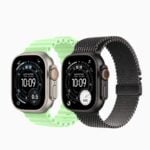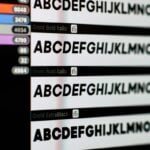Is your Mac showing two monitors as one big screen? This frustrating issue can stop you from getting the most out of your dual monitor setup. You can fix this problem by checking display settings, ensuring proper connections, or possibly upgrading your dock if you’re using one. Many Mac users face this issue when connecting external displays, but several simple solutions can get your screens working independently again.
When Mac detects two monitors as one, it’s usually because of display mirroring settings, connection problems, or dock limitations. The fix might be as simple as unchecking the “Mirror Displays” option in System Settings. If your Mac still can’t tell your monitors apart, try unplugging both displays and reconnecting them one at a time with a short wait between connections.
Sometimes the issue lies with your hardware connections. Standard USB-C docks may not support dual independent displays. In these cases, you might need to upgrade to a Thunderbolt 3 dock for proper signal splitting between monitors.
1. Check Your Hardware Setup
- Cables & Adapters: Make sure each monitor is connected with its own cable and adapter.
- Hubs/Docking Stations: Some hubs only support DisplayPort MST or DisplayLink, which can cause macOS to mirror the displays instead of extending them.
- Native Ports: If possible, connect each monitor directly to your Mac’s Thunderbolt/USB‑C ports.
⚠️ Note: Standard M1/M2 MacBooks (non‑Pro/Max) only support one external display natively. To use two, you’ll need a DisplayLink adapter or dock.
2. Adjust Display Settings
- Go to Apple Menu > System Settings > Displays.
- Click Arrangement (on macOS Ventura or later, it shows as a layout preview).
- If the monitors are mirrored, uncheck Mirror Displays.
- Drag the blue rectangles to arrange them side by side for extended mode.
3. Force macOS to Detect Displays
- Hold Option while in the Displays settings.
- Click Detect Displays (this often resolves recognition issues).
4. Update macOS & Drivers
- Install the latest macOS updates.
- If using a DisplayLink dock/adapter, download the latest DisplayLink Manager app from Synaptics.
5. Reset Display & System Settings
- Reset NVRAM/PRAM: Restart and hold
Option + Command + P + Runtil you hear the startup sound twice. - Reset SMC (for Intel Macs): Shut down → hold
Shift + Control + Option + Powerfor 10 seconds → release and restart.
6. Test Monitors Individually
- Connect each monitor one at a time to confirm both work independently.
- If each works fine alone but not together, the issue is likely with the hub/dock or macOS limitations.
7. Use DisplayLink for Unsupported Macs
If your Mac only supports one external display (like base M1/M2 models), you’ll need:
- A DisplayLink-enabled dock or adapter.
- The DisplayLink Manager app installed.
This allows multiple extended monitors even on Macs that don’t support them natively (source: Asurion).
✅ Summary:
- First, check if your Mac supports dual external monitors.
- If yes: adjust Display settings, update software, and reset NVRAM/SMC if needed.
- If no: use a DisplayLink dock to bypass the limitation.
Key Takeaways
- Check the “Mirror Displays” option isn’t selected in your Mac’s display settings.
- Try disconnecting and reconnecting monitors with a short wait between each to help your Mac detect them properly.
- USB-C docks often can’t split signals to multiple displays, so a Thunderbolt 3 dock may be needed for proper dual monitor support.
Understanding Mac Display Interfaces
Mac computers offer various interface options for connecting external displays, each with specific capabilities and limitations. These interfaces determine how your Mac communicates with monitors and can affect how multiple displays are detected and function.
Role of HDMI and USB-C in External Displays
HDMI ports on Mac computers provide a simple way to connect external displays. They carry both video and audio signals through a single cable, making them convenient for most users. Older Mac models typically support one external display through HDMI.
USB-C has become the standard interface on newer Mac models. These ports are versatile and can handle multiple functions. When used with displays, USB-C can:
- Support video output using DP Alt-Mode
- Provide power to peripherals
- Transfer data simultaneously
Many users face issues when connecting multiple monitors through docking stations that use USB-C. Sometimes the Mac recognizes two separate displays as a single extended monitor. This often happens due to how the dock processes display signals.
Thunderbolt Technology and Compatibility
Thunderbolt is Apple’s high-performance connection technology that allows for faster data transfer and display connections. Modern Macs feature Thunderbolt 3 or 4 ports that use USB-C connectors.
- Daisy-chaining capability: Connect multiple devices in sequence
- High bandwidth: Supports multiple 4K displays
- Bi-directional: 40Gbps data transfer speeds
Thunderbolt allows connecting up to two displays in a chain, with the DisplayPort device being the last in the sequence. This chain configuration can sometimes confuse macOS, causing it to detect multiple displays as one.
For proper detection, all components—the port, cable, and first device—must be genuine Thunderbolt-compatible products. Using non-certified adapters often leads to display recognition problems.
Understanding DisplayPort and DP Alt-Mode
DisplayPort is a digital display interface designed specifically for connecting computers to monitors. DP Alt-Mode allows DisplayPort signals to travel over USB-C cables, expanding connectivity options.
DisplayPort offers several benefits:
- Higher refresh rates than HDMI
- Support for deeper color depth
- Multi-Stream Transport (MST) for daisy-chaining
When troubleshooting display detection issues, checking DisplayPort settings is crucial. Sometimes the Mac’s display management software doesn’t recognize multiple monitors correctly. Using the Detect Displays option (hold Option key while viewing Display preferences) can help refresh connections.
Display settings may need manual adjustment when using DisplayPort connections through docking stations. Tools like DisplayLink Manager are designed to help manage external displays but sometimes fail to recognize separate monitors correctly.
Common Issues with Mac Detecting Monitors
Mac users often face several monitor detection problems that can disrupt their workflow. These issues typically involve incorrect display recognition and resolution configuration challenges that require specific troubleshooting steps.
Mac Perceiving Two Monitors as One
When your Mac shows two monitors as a single display, this is usually a settings or connection issue. First, check if Mirror Displays is turned off in your Display settings. This option makes both screens show the same content.
To fix this problem:
- Go to Apple menu > System Preferences > Displays
- Click the Arrangement tab
- Uncheck the “Mirror Displays” box
Connection problems can also cause this issue. Make sure all cables are firmly connected to the right ports. Try using different cables or adapters if available.
Some MacBook models (especially MacBook Air) only support one external monitor natively. For additional monitors, you might need to use a DisplayLink adapter which combines hardware and software solutions.
Resolution and Detection Problems
Detection issues often happen when Mac can’t properly identify your monitor. Simple fixes can make a big difference here.
Try these steps:
- Restart your Mac – Sometimes a simple reboot clears the problem
- Check connections – Unplug and reconnect all cables
- Update your Mac – Outdated software may cause display issues
- Try different ports – Some ports might work better than others
For resolution problems, use your display’s built-in menu buttons to select the optimal settings. If your monitor shows blurry images, try holding Option key while clicking “Scaled” in Display preferences to see more resolution options.
Adapters and dongles can sometimes cause detection issues. Use only high-quality, Mac-compatible adapters from trusted brands for the best results.
Mac Models and Their Display Capabilities
Different Mac models offer varied support for external monitors based on their hardware and design. Understanding these capabilities can help solve issues when your Mac detects two monitors as one.
Display Support in MacBook Pro Models
The MacBook Pro lineup varies in its ability to handle multiple displays. Newer models with M1 Pro and M2 Pro chips can support up to two external displays, while base M1 MacBook Pros can only handle one external monitor officially.
Models with M1 Max and M3 Max chips push this further, supporting up to four external displays. The M1 Pro and higher models can drive these displays at high resolutions, including 6K at 60Hz.
Older Intel-based MacBook Pro models typically support two displays through Thunderbolt ports. The 16-inch Intel MacBook Pro can handle up to four 4K displays or two 6K displays.
If your MacBook Pro is seeing two monitors as one, first try the Detect Displays option in Display preferences or check your cable connections.
MacBook Air and its Compatibility with External Displays
MacBook Air models have more limited display support compared to their Pro siblings. The M1 and M2 MacBook Air officially support only one external display at up to 6K resolution.
This limitation is hardware-based, not software. Users wanting to connect multiple displays to an M1 or M2 MacBook Air need special tools like DisplayLink adapters or docks.
M1 and M2 MacBook Air models include two Thunderbolt/USB 4 ports that can connect to displays. These ports support high-resolution monitors, but remember they can’t drive two separate displays natively.
Older Intel MacBook Air models can typically handle one external display through Thunderbolt or HDMI. The display quality on these models tops out at 4K compared to the 6K support on newer models.
Differences in M-Series Mac Capabilities
The M-series chips show notable differences in display support:
| Chip | Max External Displays | Max Resolution |
|---|---|---|
| M1 | 1 display | 6K @ 60Hz |
| M1 Pro | 2 displays | 6K @ 60Hz |
| M1 Max | 4 displays | 6K @ 60Hz |
| M2 | 1 display | 6K @ 60Hz |
| M2 Pro | 2 displays | 6K @ 60Hz |
| M3 | 1 display | 6K @ 60Hz |
| M3 Pro | 2 displays | 6K @ 60Hz |
The way displays connect also differs. M-series Macs use Thunderbolt ports exclusively for display connections. Some models require specific connection methods to recognize multiple monitors properly.
When connecting multiple displays, using a Thunderbolt 3 dock rather than a USB-C dock often resolves issues with displays being detected as one.
M-series Macs with limited display support can sometimes work with more monitors through DisplayLink technology, which bypasses the built-in graphics limits.
Configuring Display Settings on Mac
When your Mac shows two monitors as one, adjusting the display settings properly can solve this problem. The right configuration ensures each monitor is recognized separately and functions correctly.
Navigating System Preferences for Displays
On macOS, you can access display settings through System Preferences or System Settings, depending on your version. For most versions, click the Apple menu in the top-left corner and select “System Preferences,” then click “Displays.” In newer versions like macOS Monterey, you’ll find it under “System Settings.”
If you don’t see all your monitors, press the “Option” key while clicking the “Gather Windows” button to detect additional displays. This often helps when monitors aren’t being recognized properly.
Some Macs operate in clamshell mode when the laptop is closed but still connected to external displays. To use this mode, connect your Mac to power, an external keyboard, and mouse before closing the lid.
Adjusting Display Arrangement and Settings
After opening Display settings, click the “Arrangement” tab to see how your Mac currently recognizes your monitors. If your Mac is recognizing dual displays as one, make sure the “Mirror Displays” checkbox is not selected. When this box is checked, your Mac shows the same content on all screens instead of treating them as separate displays.
You can drag the monitor icons to match their physical arrangement on your desk. The white menu bar shows which display is set as the main one. To change your primary display, simply drag the white bar to a different monitor.
For optimal performance, check each monitor’s resolution settings under the “Display” tab. Select “Default for display” for the best results, or choose a specific resolution that works better for your setup.
Hardware Solutions and Accessories
When your Mac detects two monitors as one, the right hardware can solve the problem. Physical connections and proper equipment make all the difference in getting your displays to work correctly.
Utilizing USB-C Docks and Adapters
USB-C docks can help fix monitor detection issues on Macs. Not all docks work the same with macOS, so choosing the right one matters.
DisplayLink technology in USB-C docks often solves multi-monitor problems. These special adapters let Macs support more displays than they normally would.
Popular brands like Anker make reliable USB-C docks that work well with Mac computers. Look for docks specifically stating compatibility with Mac for best results.
Some important features to look for:
- DisplayLink certification
- Mac compatibility explicitly stated
- Thunderbolt support (for higher data speeds)
- Power delivery capability
Remember that macOS doesn’t support DisplayPort MST Hubs natively, so DisplayLink technology becomes essential.
Choosing the Right HDMI and USB-C Cables
Quality cables make a huge difference when connecting multiple monitors. Poor-quality cables often cause detection problems or signal degradation.
For best results, use high-speed HDMI cables (18Gbps or higher) when connecting to HDMI ports. This ensures enough bandwidth for high-resolution displays.
USB-C to HDMI cables can solve problems when docks fail. Sometimes connecting one monitor directly to your Mac and the second through a dock works better than using a dock for both.
Cable length matters too. Shorter cables (under 6 feet) typically provide more reliable connections and suffer less signal loss.
Always check that your cables support the resolution and refresh rate of your monitors. A cable rated for 1080p won’t work properly with a 4K display.
The Role of Triple Display Docking Stations
Triple display docking stations offer a solution for users needing more screen space. These specialized docks can handle three or more monitors simultaneously.
When choosing a triple display dock, verify it works with your Mac model. M1 and M2 Macs have special requirements for multiple displays.
Most triple display stations use DisplayLink technology to overcome Mac limitations. This requires installing DisplayLink drivers on your Mac first.
Look for these features:
- Compatible DisplayLink drivers
- Sufficient power delivery (87W+ for MacBook Pro)
- Multiple video outputs (HDMI, DisplayPort, etc.)
- Additional USB ports for peripherals
Some docks allow mixing connection types. You might connect one monitor via HDMI and another via DisplayPort, giving you more flexibility with different monitor types.
Troubleshooting DisplayLink and Multimonitor Setups
When your Mac sees two monitors as one, the issue often stems from software conflicts or hardware limitations. DisplayLink technology can help overcome these challenges, but sometimes requires special troubleshooting steps.
Addressing DisplayLink Technology Issues
DisplayLink is a crucial technology that lets Macs connect to multiple displays when hardware limitations exist. If your Mac isn’t properly recognizing DisplayLink monitors, first check if you have the latest DisplayLink drivers installed. Outdated drivers are a common cause of monitor detection problems.
When using a dock like the Dell D6000, make sure it’s compatible with your Mac model. Some users find that the dock needs to be unplugged and reconnected to trigger proper recognition of all displays.
Quick DisplayLink Fixes:
- Restart your Mac after driver installation
- Try different USB ports on your Mac
- Disconnect all monitors, then reconnect one by one
- Check if any DisplayLink firmware updates are available
Resolving Multimonitor Recognition Failures
When your Mac detects two monitors as a single display, it might be due to MST (Multi-Stream Transport) limitations. Macs don’t support MST, which can cause monitors to mirror instead of extending.
One solution is to reset your Mac’s NVRAM, which stores display settings. Turn off your Mac, then restart while holding Option+Command+P+R for about 20 seconds.
For persistent issues, try these steps:
- Open System Settings > Displays
- Hold Option while clicking “Detect Displays”
- Check if your dock supports DisplayLink technology
- Try connecting monitors through different ports
Some users find success with BenQ hybrid docking stations that specifically support DisplayLink, allowing proper extension across multiple displays rather than mirroring.
Software Updates and System Interventions
Software solutions often resolve Mac display detection issues without hardware changes. Both system updates and specific settings adjustments can fix problems where your Mac sees dual monitors as one display.
The Importance of Regular macOS Updates
Keeping your Mac’s operating system updated is crucial for proper display recognition. Apple regularly releases patches that fix bugs affecting external monitor detection. When your Mac shows two displays as the same monitor, an update might be the solution.
To check for updates:
- Click the Apple icon in the top-left corner
- Select “System Settings” or “System Preferences”
- Choose “Software Update”
- Install any available updates
Many users report display issues after system updates. For example, some MacBook owners couldn’t detect their second display after updating to macOS Monterey. In these cases, a follow-up update often fixes the problem.
Try this quick fix if updates don’t help:
- Restart your Mac while monitors are connected
- Reset the SMC (System Management Controller)
- Reset the NVRAM/PRAM
MacOS Sonoma and Display Enhancements
macOS Sonoma introduced significant improvements to multi-monitor support. The update fixed several bugs that caused Macs to recognize dual displays as a single monitor.
Key display enhancements in Sonoma include:
- Better USB-C and Thunderbolt monitor recognition
- Improved DisplayLink driver compatibility
- Fixed scaling options for multiple monitors
If you’re experiencing problems after updating to Sonoma, try the disconnect-reconnect method. Turn off your monitors, unplug all cables, wait 30 seconds, then reconnect everything in this order: adapter to Mac first, then monitor cables.
Some users with M2 MacBooks found that only one display works after specific point updates. Using display management tools from the App Store can help overcome these limitations while waiting for the next system update.
Expert Assistance and Technical Support
Sometimes monitor connection problems can be too complex to solve on your own. Professional help is available through various channels when your troubleshooting attempts don’t fix the issue of your Mac detecting two monitors as one.
When to Seek Tech Support for Monitor Issues
After trying basic fixes like checking cables and restarting your Mac, it’s time to get expert help if your monitors still appear as one display. Contact Apple Support directly if your Mac is under warranty or covered by AppleCare. They can run remote diagnostics to identify hardware or software issues.
For older Macs, consider reaching out to Apple Authorized Service Providers who have access to specialized tools and genuine Apple parts. These technicians follow Apple’s repair protocols and can often fix problems that DIY methods can’t solve.
Online platforms like JustAnswer connect you with tech experts who specialize in Mac display issues. They typically charge per question rather than hourly rates, making them a cost-effective option for quick solutions.
Signs you need professional help:
- Problem persists after trying all basic troubleshooting
- Display flickering or distortion occurs
- System crashes when connecting both monitors
- Recent macOS updates coincided with the issue
Screen Recording for Remote Diagnosis
Creating a screen recording can significantly help remote technicians diagnose your dual monitor issue. Use QuickTime Player or the built-in screenshot toolbar (Shift-Command-5) to capture the problem as it happens.
Record your Mac’s behavior when:
- Connecting both external monitors
- Opening System Preferences > Displays
- Checking the Arrangement tab where displays should appear separately
- Testing different ports and adapters
Be sure to capture the settings screen when your Mac is misidentifying the displays. This helps experts see exactly what your system detects.
Send these recordings securely using Apple’s Mail Drop or another file-sharing service. Most tech support platforms allow direct file uploads during your support session.
The Verified Expert Ecosystem
The most reliable technical support comes from verified experts who undergo multi-step quality verification processes. Apple’s own support technicians complete rigorous training programs and certification exams specific to display technologies.
Independent experts on platforms like Apple Support Communities are often rated by users and awarded “verified” status based on their solution accuracy. These community experts may offer free advice that solves your monitor detection issues.
When using third-party support services, look for:
- Verified credentials in Mac hardware support
- High success rates with display configuration issues
- Experience with your specific Mac model
- Knowledge of USB-C and Thunderbolt docking solutions
Many qualified experts can diagnose whether your issue stems from a dock compatibility problem or something deeper in your Mac’s hardware or software configuration.
Frequently Asked Questions
Mac display recognition issues can be frustrating when using multiple monitors. Here are solutions to common problems that arise when your Mac isn’t properly detecting or configuring dual displays.
How can I troubleshoot my Mac when it is not recognizing the second monitor via a docking station?
First, check all physical connections between your Mac, dock, and monitors. Make sure cables are firmly connected.
Try unplugging and reconnecting the dock to your Mac. Sometimes removing the power cord to the monitor and plugging it back in while still connected to the Mac can resolve detection issues.
For USB-C docks, be aware that some models can’t support dual independent displays. You may need a Thunderbolt 3 dock instead of a USB-C dock to properly drive two external monitors with independent signals.
What steps should be taken if ‘Detect Displays’ on a Mac is not functioning correctly?
Start by restarting both your Mac and the connected monitors. This simple step often resolves temporary glitches.
Next, go to System Preferences > Displays and click the Detect Displays button. If this doesn’t work, try holding the Option key while clicking Detect Displays to show additional options.
Check for macOS updates, as display issues are sometimes fixed in system updates. Also verify your display cables are compatible with your Mac model.
How can I resolve an issue where my Mac is mirroring the second monitor but not detecting it?
Check if mirroring is accidentally enabled. Go to System Preferences > Displays > Arrangement tab and make sure the Mirror Displays checkbox isn’t selected.
If using an adapter, check its specifications. Dual HDMI adapters connected to a single USB-C port often can only display mirrored images on both screens.
Try using different ports on your Mac if available. Some ports may provide better display support than others.
What are potential solutions when a MacBook only identifies one monitor in a multi-display setup?
Reset the NVRAM by restarting your Mac and immediately holding Option+Command+P+R for about 20 seconds. This can fix display recognition issues.
Check your adapter or dock specifications. Some MacBook models have limitations on how many external displays they can support simultaneously.
Try connecting each monitor individually to verify both work separately. This helps determine if one of the monitors or cables might be faulty.
How to configure a Mac to operate dual monitors as separate displays instead of duplicating?
Open System Preferences > Displays > Arrangement tab. Ensure the Mirror Displays checkbox is unchecked.
On the Arrangement tab, you can drag the display icons to match your physical setup. The white bar represents your primary display’s menu bar location.
To change which display is primary, drag the white menu bar from one display icon to another. This determines where notifications and the dock appear by default.
Why might a MacBook recognize an external monitor but display no signal, and how can this be fixed?
Check display resolution settings. Sometimes a monitor might be detected but using an incompatible resolution. Try adjusting this in System Preferences > Displays.
Test with another cable if possible. Damaged or low-quality cables can cause signal issues even when the monitor is detected.
Update graphics drivers and macOS. Outdated software can cause display signal problems even when hardware is properly connected.







